mieducation
B.I.G. Exact Sensitive
Considering the Individual
Working on the principle that every eye is different, in 2020 Rodenstock introduced B.I.G. Exact, the world’s first commercial lenses built on an exact biometric eye model. Using the measurements from the Rodenstock DNEye scanner, it introduced a new way of calculating a spectacle lens, changing the landscape of optics. Now taking the next step, Rodenstock introduces B.I.G. Exact Sensitive, a lens considering individual differences in visual sensitivity.
WRITER Nicola Peaper
LEARNING OBJECTIVES
On completion of this CPD activity, participants should:
1. Realise that different tasks require the visual system to respond in different ways,
2. Understand the factors that can affect visual acuity for individual patients,
3. Realise that individual patients have differing levels of tolerance to blur, and
4. Be aware of the evidence to support B.I.G. Exact Sensitive lenses.
Even slight distortions caused by lens aberrations can negatively affect some spectacle wearers, causing disruption in visual flow, while they do not bother others. This suggests wearers, of all levels of sensitivity could benefit from getting spectacle lenses that are tailored to their individual visual sensitivity.
As discussed in the article ‘Corridor conundrums, optimising progressive addition lenses’,1 the Minkwitz condition dictates that for every dioptre per millimetre increase rate in lens power vertically on a lens, there is usually an associated two dioptres per millimetre lateral increase rate of unwanted astigmatism. This affects the corridor width in the immediate vicinity of the progression zone. Further to the narrowing in corridor, the astigmatism in the periphery of the lens is related to the amount of swim a patient may experience. The article outlines the various compensations and optimisations that have been developed to improve the perceived corridor width and reduce the perception of swim with progressive addition lenses (PALs), allowing quicker and easier adaptation. Modern lens designs allowing for the movement of Minkwitz aberration into less used areas of the lens dependent on the patient’s lifestyle, and the ability to control corridor lengths, enables practitioners to further reduce patient non-adaption to this type of lens.
Despite this, there are still patients that fail with PAL. This is not script related as it happens with the smallest of scripts. Using different designs has no effect, and they remain inexplicably problematic. It is often possible, as practitioners, to predict the patients who will fail. They are the ones that will not tolerate a small script change such as the introduction of a small 0.25D cylinder, or the change of cylinder axis of a couple of degrees. The only solution seems to be to try to replicate exactly what they had previously.
From this, it appears probable that intolerance to PAL is not always related to lens type and design but to the patient’s visual sensitivity and their subsequent perception of that design. With this in mind, Rodenstock decided to build on its 2020 introduction of B.I.G. Exact, the world’s first commercial lenses built on the individual biometry of the eye, by developing a lens that also considers the individual perception of the wearer.
VISUAL TASKS
Throughout the day, we find ourselves in many different situations, from driving into the office to reviewing documents on a computer screen, to watching television while looking at information on a mobile phone. Common to all these tasks is the fact that the visual system must adapt to the situation with eye movements and change of focus.
While driving, we use our peripheral vision to detect motion in our environment. When the brain picks up on a point of interest our focus moves there, by use of both head and eye movements, to give the brain more visual information, which then determines our next action. All those gaze movements, from far to near or periphery to centre while using the lens, can be described as vision flow.
Reading, by comparison, is comprised of accurate, rhythmical, and reflexively executed sequences of saccade eye movements, separated by brief pauses called fixations. Saccades are fast movements of different amplitudes designed to allow the fovea to move across the text.2 Navigating a text undisturbed with zones of aberrations in the lens can be described as reading flow.
The natural environment contains objects at many distances, but the human eye can best focus light from only one distance at a time. Thus, at any one time, much of the retinal image will be somewhat blurred. Defocus blur provides useful information for many biological and perceptual tasks, such as the control of accommodation and the estimation of depth and scale. Humans refocus their eyes approximately 150,000 times a day.3
The way in which humans process information in the workplace can affect productivity. There has been much research around this subject leading, for example, to the way instrument panels are arranged for optimum performance. Wickens and Carswell said, “In complex environments, selective attention may be described in terms of how it is influenced by the combined force of four factors – the SEEV model”.4 SEEV stands for salience, effort, expectancy, and value.
If we apply this model to vision:
• Salience is represented by how much a stimulus stands out,
• Effort is the effort required to change focus,
• Expectancy is our expectation of where the next information will come from, and
• Value is the importance of the information regarding the task at hand.
These influences can often be revealed by eye movements when visual selective attention is assessed by visual scanning.
When our vision is impaired, for example by blur caused by aberrations in spectacle lenses, the visual processing in the brain can be disrupted. Even slight distortions caused by lens aberrations can negatively affect some spectacle wearers. Blur can increase the effort needed to access the visual information available, limiting performance and possibly leading to visual fatigue. All PAL wearers are exposed to unwanted astigmatism and react to differing levels.
HOW MUCH BLUR IS TOLERABLE?
In the paper, ‘Noticeable, troublesome and objectionable limits of blur’,5 Atchison argued that 0.25D to 0.50D of blur fell within the category of noticeable blur. This means that even if most subjects detect blur quite quickly, it first starts to become bothersome after 1.6 times this amount of blur. Also, the way people detect blur varies among individuals; the larger the variation, the lower the visual acuity (VA). More so, smaller reading matter made the blur less tolerable and so finer detail became more difficult. Atchison and Mathur further looked at astigmatic blur and concluded that “small levels of crossed-cylinder blur (≤0.75D) produce losses in VA that are dependent on the cylinder axis. 0.75D crossed cylinders produce losses in VA that are twice those produced by defocus of the same blur strength”.6 Two studies show that reading speeds are significantly reduced by up to 35% with the simulation of astigmatic blur of as little as 0.75D at 90°.7,8
My previous mivision article1 quoted research by Sheedy et al.9 who produced a graph of predicted PAL corridor widths as a function of power increase rate in the middle of a given corridor. With a corridor length of 14 mm and a +2.00D add, the corridor width on a standard PAL is 1.9 mm wide. This means the patient would only need to alter their gaze by 0.95 mm to encounter 0.25D of unwanted astigmatism, which more sensitive patients may find disturbing. The corridor width to reach 0.50D of cylinder is just under 4 mm. This is likely to significantly impact eye movements such as the saccades used in reading vision, even in the less visually sensitive. Indeed, a study by Concepcion-Grande et al.2 evaluated reading time and characteristics of fixations at different distances when looking through different areas of PAL with different power distributions by means of eye-tracking technology. They used three different designs – distance preferencing, near preferencing, and a balanced design.
They concluded that reading time and eye movements were affected by the differing power distributions, for example when subjects were using PAL optimised for near vision, reading time was decreased, the total duration of fixations was decreased, and the number of fixations was reduced in comparison with PAL Balance and PAL Distance designs. They concluded that to provide the user with the best visual experience, PAL design selection must consider user needs.
The effect of PAL on eye movements, both at distance and near, are best illustrated by asking patients questions similar to the following:
• Do you notice any disruption/lag when your eyes move focus from your smartphone to a distant view? This shows problems with vision flow.
• Do you have to read the same sentence repeatedly? This shows problems with reading flow.
• Do you have difficulty switching your eyes to peripheral areas, making activities like navigating crowded spaces more challenging? This shows problems with orientation.
Overcoming the Blur
Choosing a lens design suited to the patient’s lifestyle will obviously help with some of these problems, but there are still failures due to higher sensitivity to aberration. To ensure smooth transitions between far and near, as well as central and peripheral, the aberration fields must be adapted to personal visual sensitivity.
Visual performance can be optimised if the visual information reaching the retina is in line with the physiology of the person. Imagine that visual information has a specific format. If this format fits with the individual physiology, the visual process is efficient and smooth. However, if the format differs from the filter’s ‘requirements’, that is, the information is not aligned with the individual physiology, more effort is required to process the information, leading to suboptimal visual performance. This is illustrated by a study from Zorzi et al.10 that shows a simple manipulation of letter spacing substantially improved text reading performance on the fly (without any training) in a large, unselected sample of Italian and French dyslexic children. Extralarge letter spacing helps reading, because people with dyslexia are abnormally affected by crowding, a perceptual phenomenon with detrimental effects on letter recognition that is modulated by the spacing between letters. The study showed that by customising the outside material to that person’s specific visual perception, the performance of the person improves. This suggested that if it is possible to arrange the Minkwitz astigmatism to suit the patient’s level of visual sensitivity, performance could be improved for all PAL wearers.
Adapting to Visusal Sensitivity
Before a lens could be adapted to visual sensitivity, a method needed to be developed to measure that sensitivity.
We know that visual sensitivity is unique to each person and can vary from high to low. The differences between a person with high and low sensitivity is illustrated in Figure 1. The vertical axis represents the change in VA, assuming that the intercept is the best corrected VA. The horizontal axis represents the degree of aberration or optical blur encountered.
There are two examples in the graph: person one experiences a sharper decline of VA when aberrations occur. This person exhibits a high visual sensitivity. Contrarily, person two only experiences a moderate drop in acuity with increasing aberrations, suggesting they have a lower visual sensitivity. In this graph, the visual sensitivity is illustrated by the steepness of the decline in VA.
As visual sensitivity is tied to VA, it can be defined as the drop in VA caused by aberrations, and it can be used to describe how much the ability to distinguish details is reduced when vision is affected by unwanted aberrations or blur. Therefore, the criteria that affect VA can be used to identify the level for each patient.
There are several factors that can affect VA, for example:
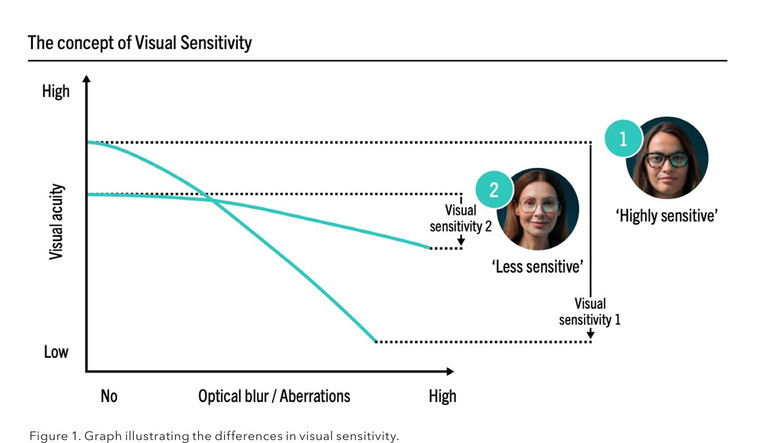
Pupil size. When the eye views a point source, it receives a cone of diverging rays, and the diameter of the incident cone is limited by pupil size. As the eye focusses the light, ideally all rays would converge as a cone to a point focus on the retina. In reality, optical aberrations resulting from the shape, alignment, and positioning of various optical surfaces within the eye, and variations in refractive indices mean that for light of a given wavelength, rays from different parts of the pupil deviate from the ideal cone pattern. Due to this, the image on the retina is a patch rather than a point. In general, rays from the more peripheral parts of the pupil are more aberrated. Coupled to this, different wavelengths of light have a longitudinal difference in the position of best focus; the so-called longitudinal chromatic aberration. Again, light spread in the retinal image is reduced by a small pupil. The smaller the pupil, the larger the defocus that will still be tolerated without disruption, thereby decreasing sensitivity.11
Refractive error. Conditions like myopia or presbyopia may affect people’s visual acuity in various ways. For example, as predicted by retinal stretching, cone packing density is lower in highly myopic eyes than in emmetropic eyes.12
Age. In normal, healthy eyes, visual acuity typically declines with age.13
Aberrometry. Higher order aberrations (HOA), such as spherical aberration, serve to increase the depth of focus. A 2011 study by Yohann Benard et al.14 demonstrated that with larger pupil sizes, depth of focus was significantly improved by using a combination of 4th order and 6th order spherical aberration. Although HOAs reduce VA in the focal plane, they reduce the amount that VA decreases as you move away from the focal plane.
All these parameters are accessible either from the subjective examination, which supplies the VA, or from measurements from the Rodenstock DNEye scanner, which measures the aberrometry, pupillometry, and biometry of the individual eye.
The calculations to produce a value for visual sensitivity from these parameters is highly complex. We cannot base the interpretation of the visual sensitivity solely on one parameter because the complete picture is far more complicated. For instance, patients with higher VA tend to be more sensitive. Also, smaller pupil sizes tend to induce a lower sensitivity because of a reduced circle of confusion. Whereas higher levels of HOA can improve depth of focus and so are associated with lower visual sensitivity. Pupil size also dictates the effects of HOA. To resolve these levels of complexity, Rodenstock developed an artificial intelligence (AI) model to determine visual sensitivity. The individual visual sensitivity, along with the individual biometry, is then used to calculate the spectacle lens. Lenses produced in this way are called B.I.G. Exact Sensitive.
THE DIFFERENCE IN A CALCULATION
Based on analysis of biometric data from hundreds of spectacle wearers, Rodenstock discovered that as many as 83% of spectacle lenses do not fit the wearers’ visual sensitivity (Figure 2).
When considering the difference that using visual sensitivity measures makes, it is important to not only look at the individual aberration patterns but also at the patient’s perception of that pattern. As can be expected for our more visually sensitive patients, the lens design is optimised by concentrating the lens aberrations to the periphery, which leads to the perception of much wider fields of view. For the less visually sensitive patients, the lens design features minor aberrations in the central lens region. This reduces aberrations in the periphery, which are then evenly distributed.
Figure 3 shows the differences between the optics and perception of B.I.G. Exact and B.I.G. Exact Sensitive. Optics represents the optical design of the lens and shows the aberration pattern. Perception shows a schematic representation of what the perception of that specific optical design might be. Essentially, it shows how the person with a specific sensitivity level might see/ perceive aberrations when looking through that specific lens configuration.
For B.I.G. Exact lenses of the same design, the optics (aberration pattern) is the same for all patients. The perception of that aberration pattern significantly differs due to visual sensitivity. The more sensitive the patient, the larger and more pronounced the aberrations appear.
When the design is influenced by visual sensitivity through B.I.G. Exact Sensitive, patients with lower sensitivity have slightly larger but less intense aberration patterns while, at higher sensitivity levels, the aberration fields are more concentrated in the lens periphery.
A comparison of the design of B.I.G. Exact Sensitive Lenses with B.I.G. Exact lenses with a similar prescription shows that B.I.G. Exact Sensitive offers people with high visual sensitivity up to 42% more aberration free zones, while the design for individuals with low sensitivity reduces peripheral aberrations by up to 30%, resulting in a wider perceived field of vision.
NOT ONLY FOR HIGHLY SENSITIVE PATIENTS
The design of the lens for low sensitivity draws on work Rodenstock has done on the generalisation of the Minkwitz theorem.15 The Minkwitz theorem describes the linear relationship between the increase of peripheral astigmatism and the increase of power along an umbilical line. In optometry, the Minkwitz theorem is the generally recognised limit for the performance of progressive lenses, and it was thought to be impossible to achieve improvements that did not satisfy it. Rodenstock researched to shift these limits. Since Minkwitz’s theorem is based on some constraints (navel line), it was able to derive a generalised theorem that shows the increase in peripheral astigmatism depends not only on the increase in refractive power but also on another parameter; the increase in astigmatism along the principal line.
It is now possible to compensate for the influence of the increase in refractive power and reduce peripheral astigmatism. For lowsensitivity patients, we can introduce uniform aberration fields into the corridor that they cannot perceive. This reduces peripheral aberrations, which are then evenly distributed to offer a wider perceived field of view.
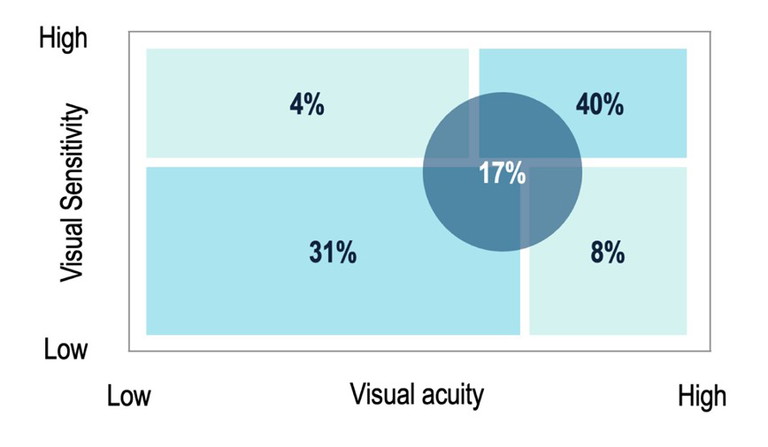
Figure 2. Eighty-three per cent of patients do not have lenses that fit their visual sensitivity.
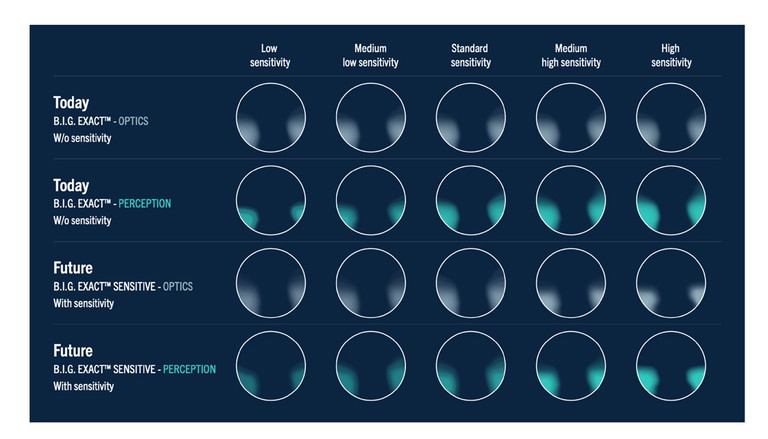
Figure 3. Demonstrating the differences between the optics and perception of B.I.G. Exact and B.I.G. Exact Sensitive.
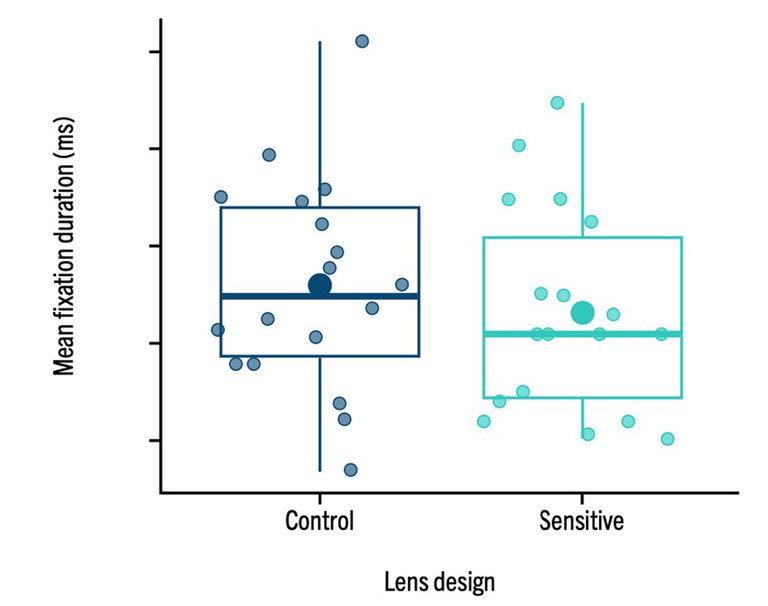
Figure 4. B.I.G. Exact Sensitive reduced fixation duration in a complex task.
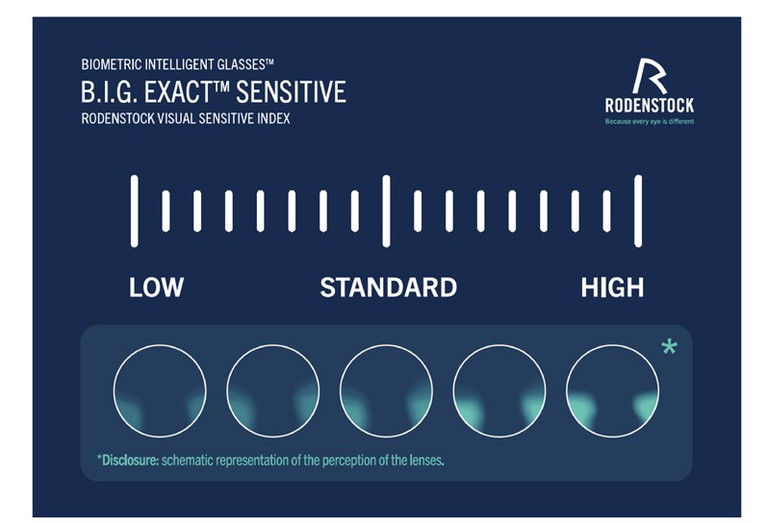
Figure 5. Schematic representation of ways B.I.G. Exact Sensitive changes, depending on the level of sensitivity. Visual Sensitivity Index illustrates each person’s unique visual sensitivity.
WEARER TRIALS AND TESTING
To prove the performance benefits of the new B.I.G. Exact Sensitive lenses, Rodenstock conducted an eye tracking study at its Munich laboratory with 18 patients. This consisted of a standardised search task during which investigators measured several eye-tracking metrics (e.g., fixation duration, saccade duration, number of saccades, number of correction movements, etc.) and assessed cognitive load. Fixation duration is a good indication of the effectiveness of a person’s visual processing. Shorter fixation duration typically means that information is processed quickly and efficiently.
It was found that the new lenses reduced fixation duration in a complex visual task. Compared to control lenses, the fixation duration with B.I.G. Exact Sensitive lenses was reduced significantly (Figure 4). This could be an indication of the lenses offering information that is more aligned with the participants’ individual visual system.
Participants were also asked to subjectively assess their workload and perceived performance and effort while doing the search tasks, using the established NASA Task Load Index. This asks the participant to rate six subjective aspects: mental demand, physical demand, temporal demand, performance, effort, and frustration.
On average, participants with the new lenses experienced reduced mental load and better performance; both indications that the new B.I.G. Exact Sensitive lenses work as intended.
An internal wearer trial with 20 patients was conducted, comparing B.I.G. Exact lenses with the new design. The trial was successful as 79% of the participants preferred the new designs over the previous generation.
Following on from this, an external trial was carried out by the University of Applied Sciences in Munich with 47 patients. The results showed that 83% of participants preferred B.I.G. Exact Sensitive with improvements in:
Vision flow. There was a reported 24% improvement in shifting between tasks at different distances in different viewing zones.
Reading flow. There was a reported 28% improvement in reading with no disturbances, giving an improved reading experience.
Orientation. There was a reported 35% improvement in shifting attention from central vision to the periphery.
Every eye is different, and similarly there are individual differences in visual sensitivity. Even slight distortions caused by lens aberrations can negatively affect some spectacle wearers while they do not bother others. Rodenstock B.I.G. Exact Sensitive configures the lens design to offer the visual support needed for daily visual activities for both high and low visually sensitive patients, as observed in the eye tracking trials.
No matter what the visual sensitivity level (Figure 5) B.I.G. Exact Sensitive improved performance and reduced mental load.
This article was sponsored by Rodenstock. Material source: Rodenstock White Paper B.I.G. Exact Sensitive.
To earn your CPD hours from this article, visit mieducation.com/big-exact-sensitive-consideringthe-individual.
References
1. Peaper N. Corridor conundrums, optimising progressive addition lenses. mivision. 2024 Sept;(205):71. Available at: mivision.com.au/2024/12/corridor-conundrums-optimisingprogressive-addition-lenses [accessed Apr 2025].
2. Concepcion-Grande P, Chamorro E, Gómez-Pedrero JA, et al. Correlation between reading time and characteristics of eye fixations and progressive lens design. PLoS One. 2023 Mar 27;18(3):e0281861. doi: 10.1371/journal.pone.0281861.
3. Sebastian S, Burge J, Geisler WS. Defocus blur discrimination in natural images with natural optics. J Vis. 2015;15(5):16. doi: 10.1167/15.5.16.
4. Salvendy G (ed). Handbook of human factors and ergonomics. Fourth edition. New Jersey: John Wiley and Sons; 2012.
5. Atchison DA, Fisher SW, Pedersen CA, Ridall PG. Noticeable, troublesome and objectionable limits of blur. Vision Res. 2005 Jul;45(15):1967-74. doi: 10.1016/j. visres.2005.01.022.
6. Atchison DA, Mathur A. Visual acuity with astigmatic blur. Optom Vis Sci. 2011 Jul;88(7):E798-805. doi: 10.1097/OPX.0b013e3182186bc4.
7. Wills J, Gillett R, Wood J, et al. Effect of simulated astigmatic refractive error on reading performance in the young. Optom Vis Sci. 2012 Mar;89(3):271-6. doi: 10.1097/ OPX.0b013e3182429c6b.
8. Casagrande M, Baumeister M, Kohnen T, et al. Influence of additional astigmatism on distance-corrected near visual acuity and reading performance. Br J Ophthalmol. 2014 Jan;98(1):24-9. doi: 10.1136/bjophthalmol-2013-303066.
9. Sheedy JE, Campbell C, King-Smith E, Hayes JR. Progressive powered lenses: the Minkwitz theorem. Optom Vis Sci. 2005 Oct;82(10):916-22. doi: 10.1097/01. opx.0000181266.60785.c9.
10. Zorzi M, Barbiero C, Ziegler JC, et al. Extra-large letter spacing improves reading in dyslexia. Proc Natl Acad Sci U S A. 2012 Jul 10;109(28):11455-9. doi: 10.1073/ pnas.1205566109.
11. Jackson AJ, Bailey I. Visual Acuity. Optometry in Practice. 2004;5:53-70. Available at: researchgate.net/publication/279643659_Visual_Acuity [accessed Apr 2025].
12. Chui TY, Song H, Burns SA. Individual variations in human cone photoreceptor packing density: variations with refractive error. Invest Ophthalmol Vis Sci. 2008
Oct;49(10):4679-87. doi: 10.1167/iovs.08-2135.
13. Elliott DB, Yang KC, Whitaker D. Visual acuity changes throughout adulthood in normal, healthy eyes: seeing beyond 6/6. Optom Vis Sci. 1995 Mar;72(3):186-91. doi: 10.1097/00006324-199503000-00006.
14. Benard Y, Lopez-Gil N, Legras R. Optimizing the subjective depth-of-focus with combinations of fourth and sixth-order spherical aberration. Vision Res. 2011 Dec 8;51(23-24):2471-7. doi: 10.1016/j.visres.2011.10.003.
15. Esser G, Becken W, Altheimer H, Müller W. Generalization of the Minkwitz theorem to nonumbilical lines of symmetrical surfaces. J Opt Soc Am A Opt Image Sci Vis. 2017 Mar 1;34(3):441-448. doi: 10.1364/ JOSAA.34.000441.

Nicola Peaper BSc (Hons) Ophthalmic Optics, Cert 4 TAE, qualified as an optometrist in the United Kingdom in 1985 and practised in private and corporate practice there for 20 years. In 2001–02 she was employed as ophthalmic advisor to Kensington, Chelsea, and Westminster Health Authority. After moving to Australia in 2005, she worked in fitting laboratories advising on procedures and quality. In roles as state and national training manager, she gained extensive experience in presenting the technology behind, and the prescribing and fitting of, ophthalmic lenses. Ms Peaper recently semiretired from her role as Professional Services Manager for Rodenstock Australia.